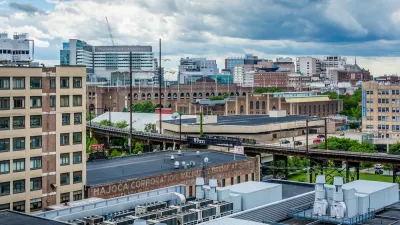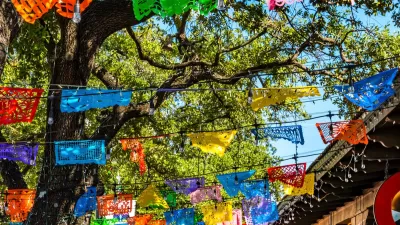After a decade of phenomenal growth and transformation, a survey of D.C. residents reveals widespread agreement on neighborhood improvement, but also concern that the changes are only benefiting the city's affluent residents.
A recent Washington Post poll finds mixed views of the impact of redevelopment among the city's residents, reports Marc Fisher. "Across the District, residents see many neighborhoods thriving as they haven’t in decades, but depending on their income and race, Washingtonians often see that boom benefiting different groups. What many residents do agree on is that the city’s mayor and other elected officials have little ability to ensure that the new prosperity will lift all boats."
While many residents view the city government as unable or unwilling to protect vulnerable populations from rising housing prices and cultural transformation, some see an ulterior motive. "Michelle McKenzie, who opened a storefront church that has drawn black congregants in an increasingly white part of town, says the demographic shift is the result of The Plan, a decades-old staple of District folklore — a purported drive by powerful white interests to reclaim the city from its long-standing black majority," writes Fisher. "Some mayors supported The Plan, McKenzie says, and others fought it but without making much difference. 'The Plan is The Plan,' she says."
FULL STORY: Most in D.C. say neighborhoods are better, but many say redevelopment helps the rich more

Study: Maui’s Plan to Convert Vacation Rentals to Long-Term Housing Could Cause Nearly $1 Billion Economic Loss
The plan would reduce visitor accommodation by 25,% resulting in 1,900 jobs lost.

North Texas Transit Leaders Tout Benefits of TOD for Growing Region
At a summit focused on transit-oriented development, policymakers discussed how North Texas’ expanded light rail system can serve as a tool for economic growth.

Why Should We Subsidize Public Transportation?
Many public transit agencies face financial stress due to rising costs, declining fare revenue, and declining subsidies. Transit advocates must provide a strong business case for increasing public transit funding.

How to Make US Trains Faster
Changes to boarding platforms and a switch to electric trains could improve U.S. passenger rail service without the added cost of high-speed rail.

Columbia’s Revitalized ‘Loop’ Is a Hub for Local Entrepreneurs
A focus on small businesses is helping a commercial corridor in Columbia, Missouri thrive.

Invasive Insect Threatens Minnesota’s Ash Forests
The Emerald Ash Borer is a rapidly spreading invasive pest threatening Minnesota’s ash trees, and homeowners are encouraged to plant diverse replacement species, avoid moving ash firewood, and monitor for signs of infestation.
Urban Design for Planners 1: Software Tools
This six-course series explores essential urban design concepts using open source software and equips planners with the tools they need to participate fully in the urban design process.
Planning for Universal Design
Learn the tools for implementing Universal Design in planning regulations.
Ascent Environmental
Borough of Carlisle
Institute for Housing and Urban Development Studies (IHS)
City of Grandview
Harvard GSD Executive Education
Toledo-Lucas County Plan Commissions
Salt Lake City
NYU Wagner Graduate School of Public Service





























